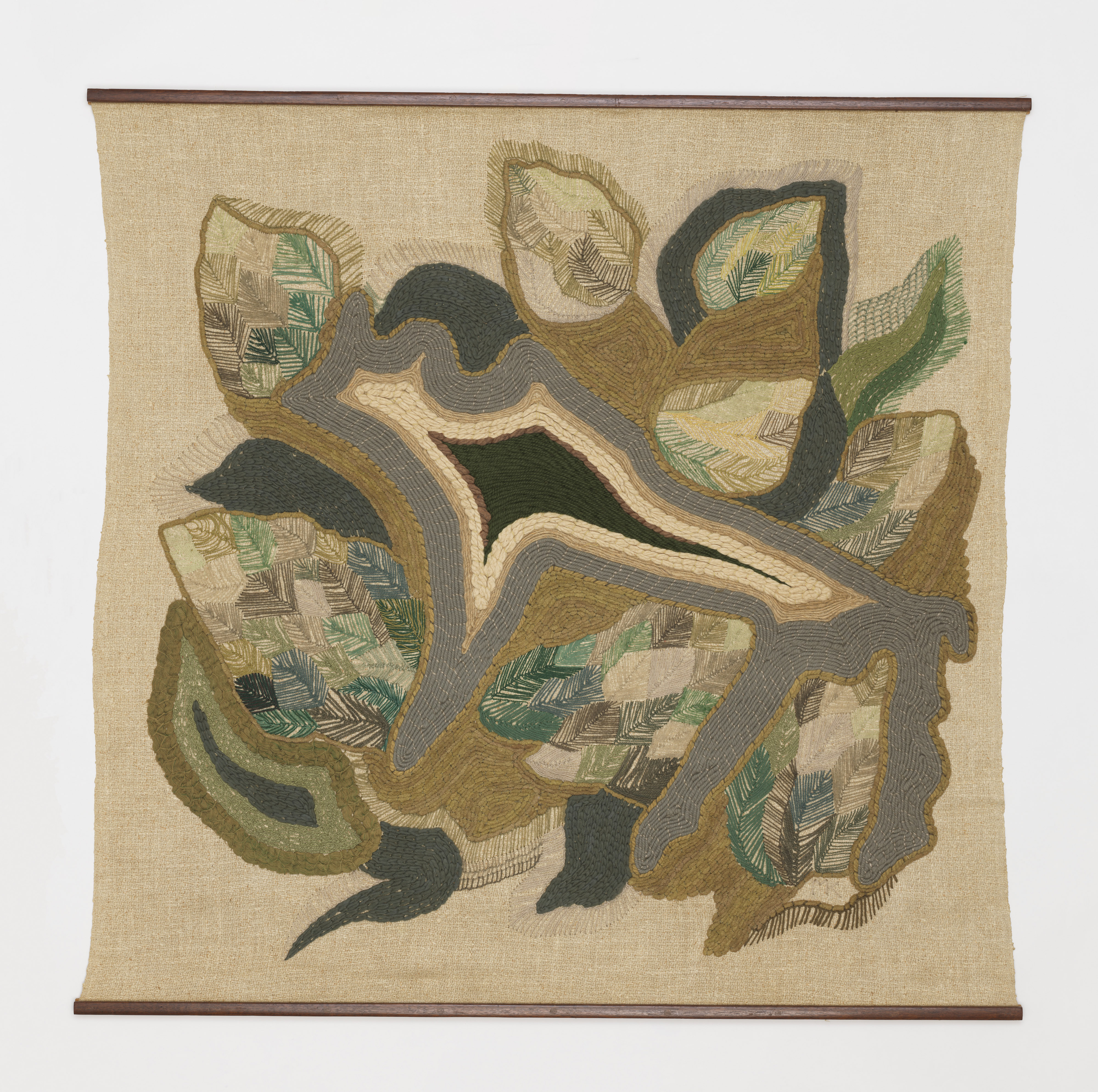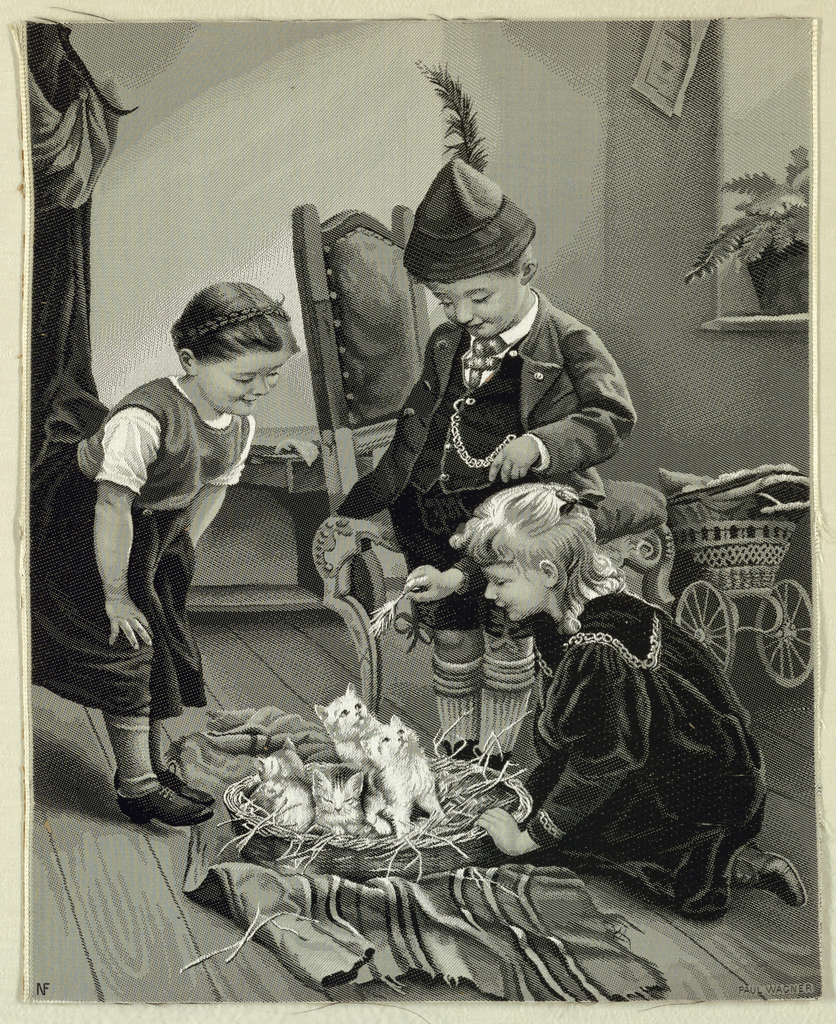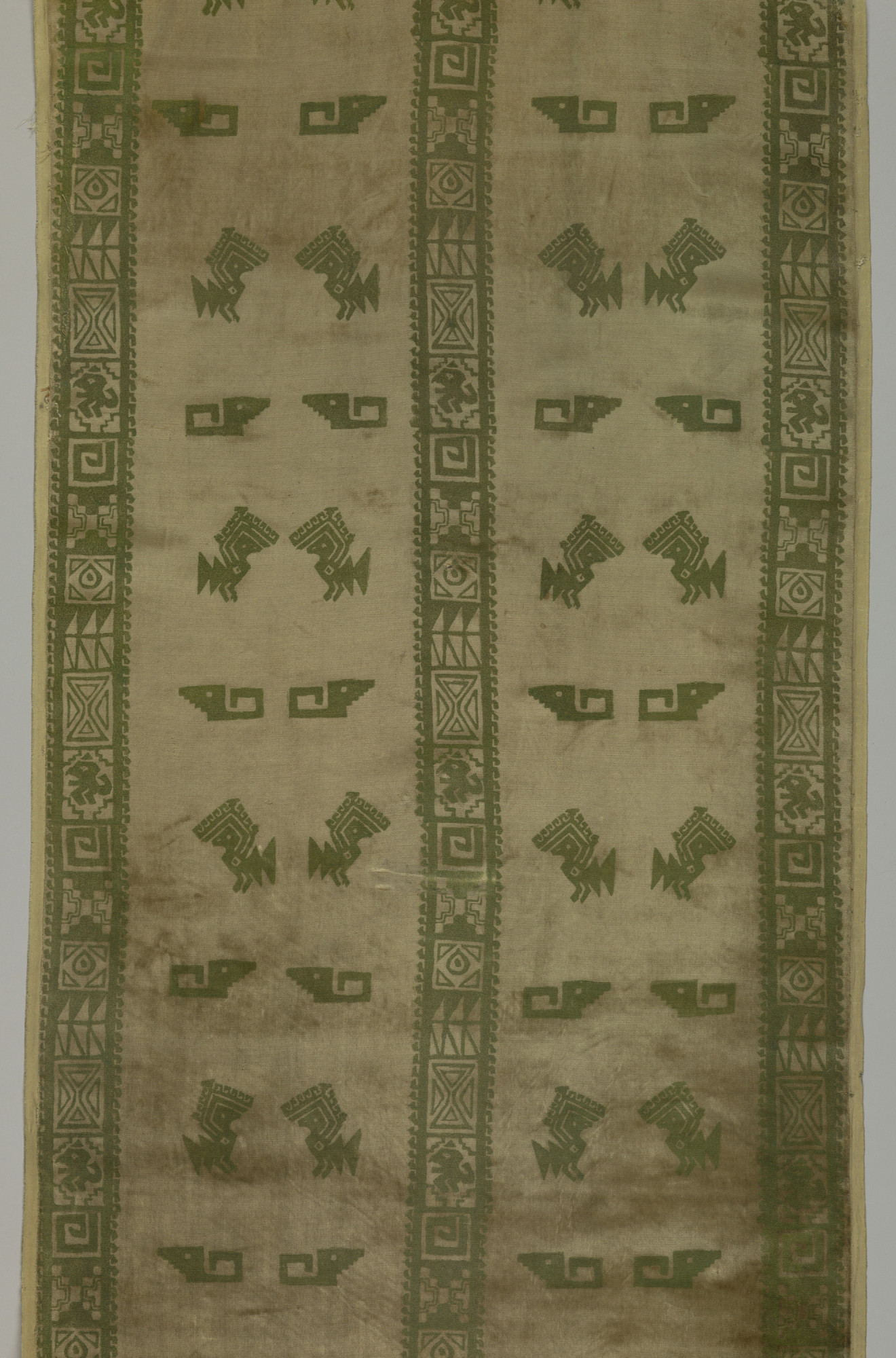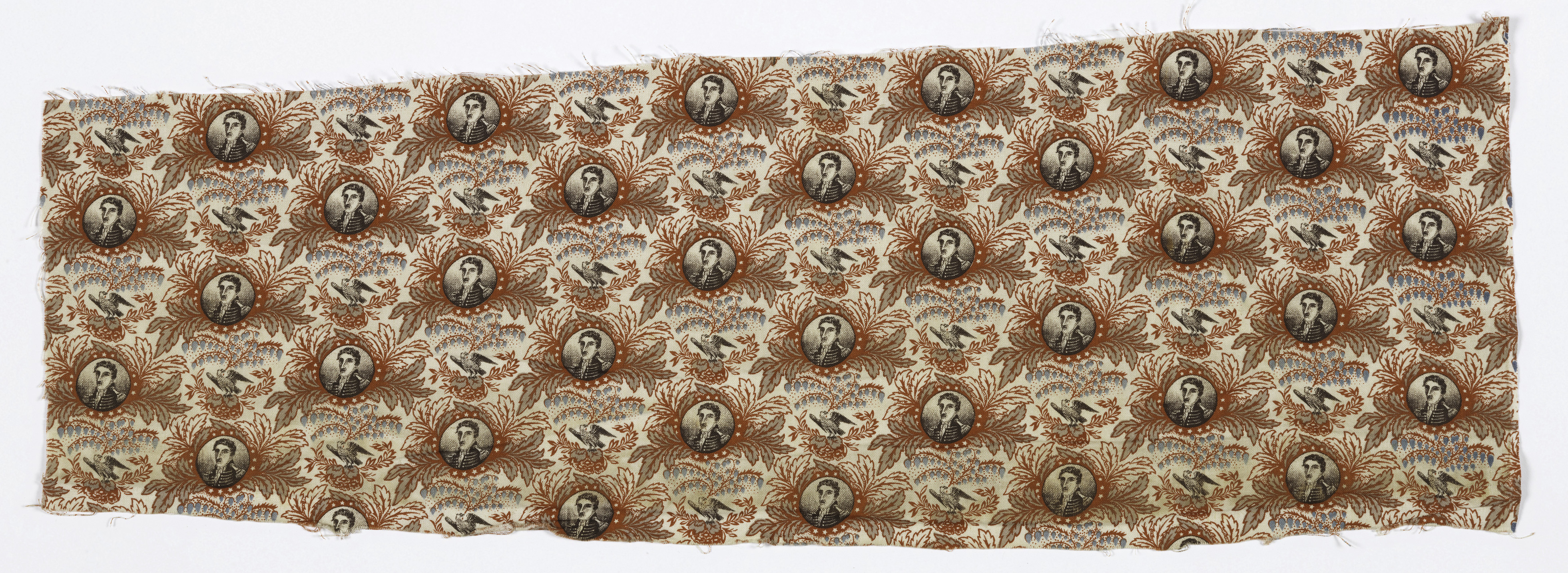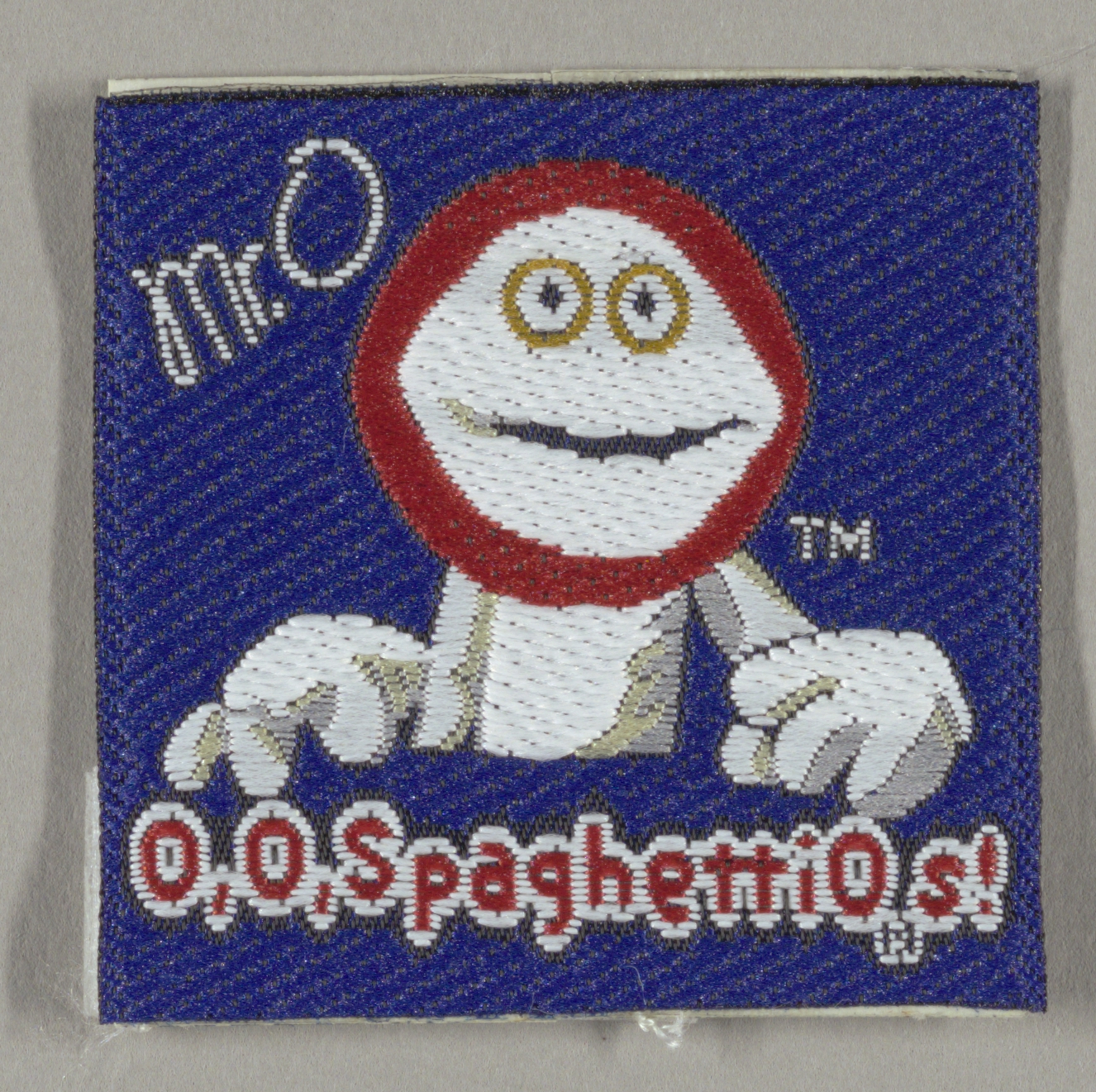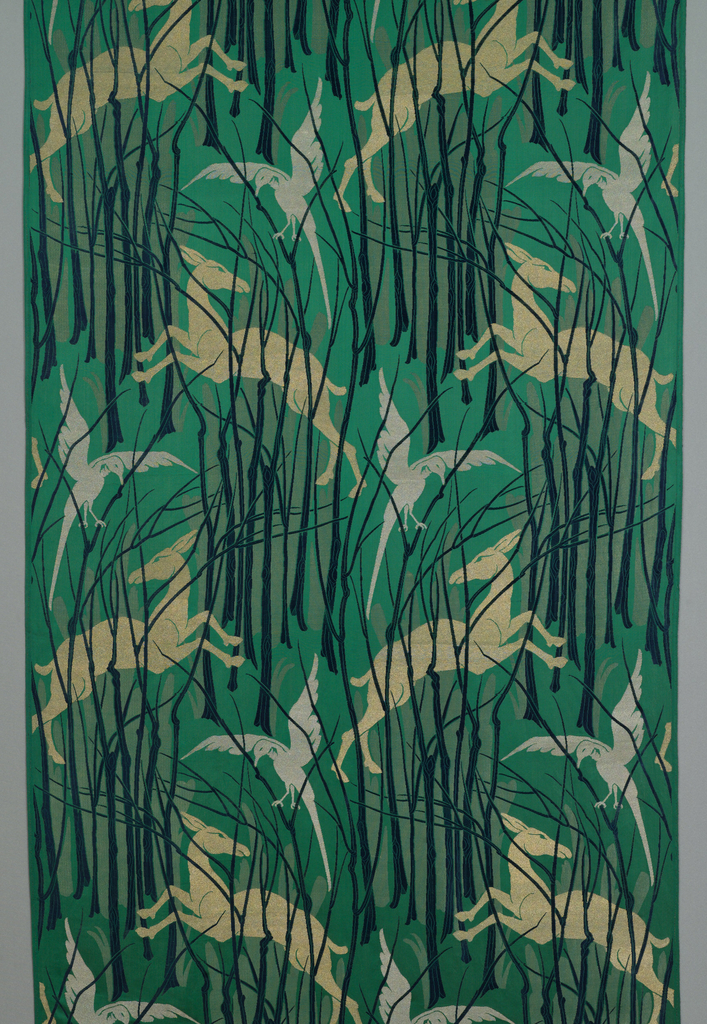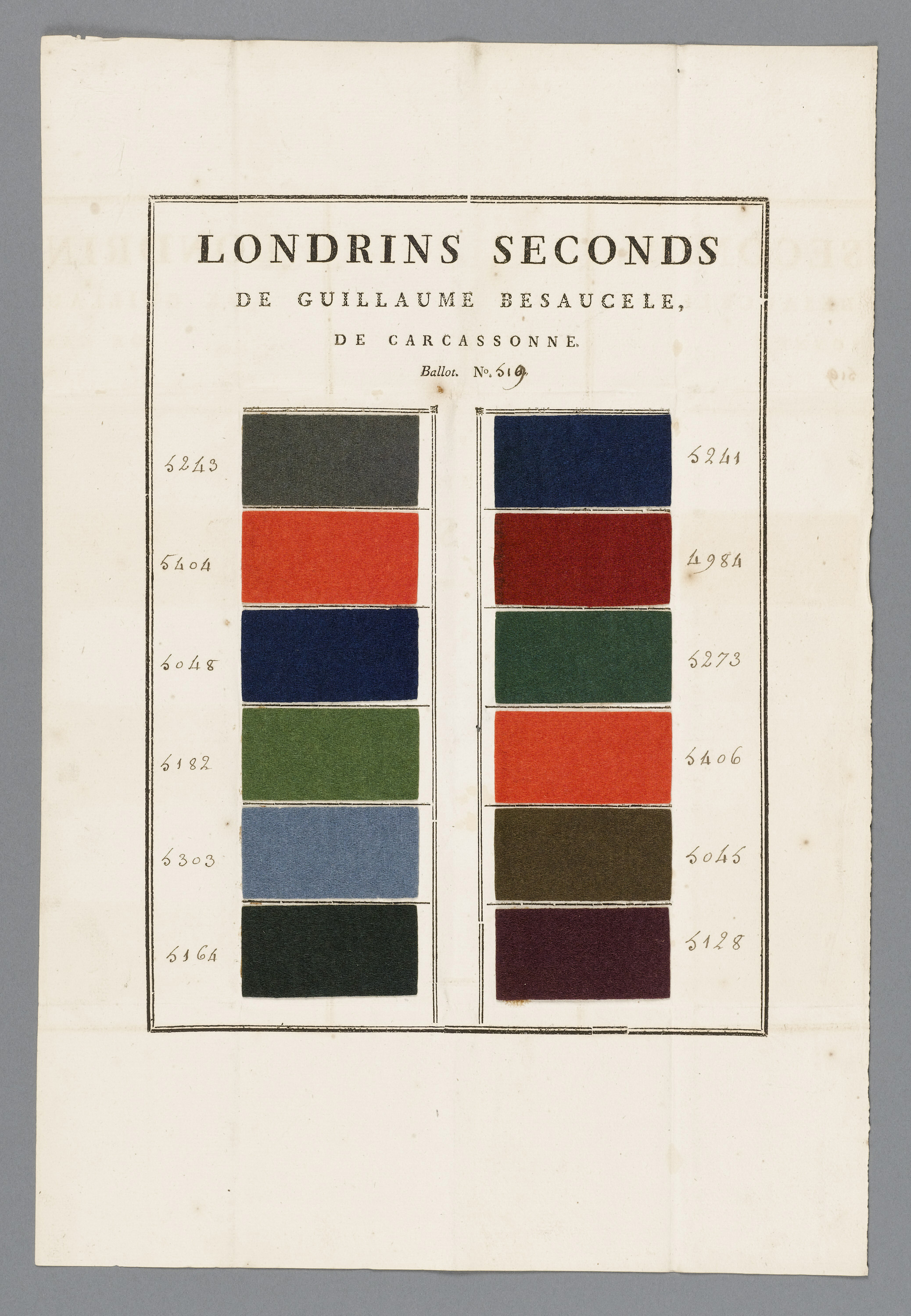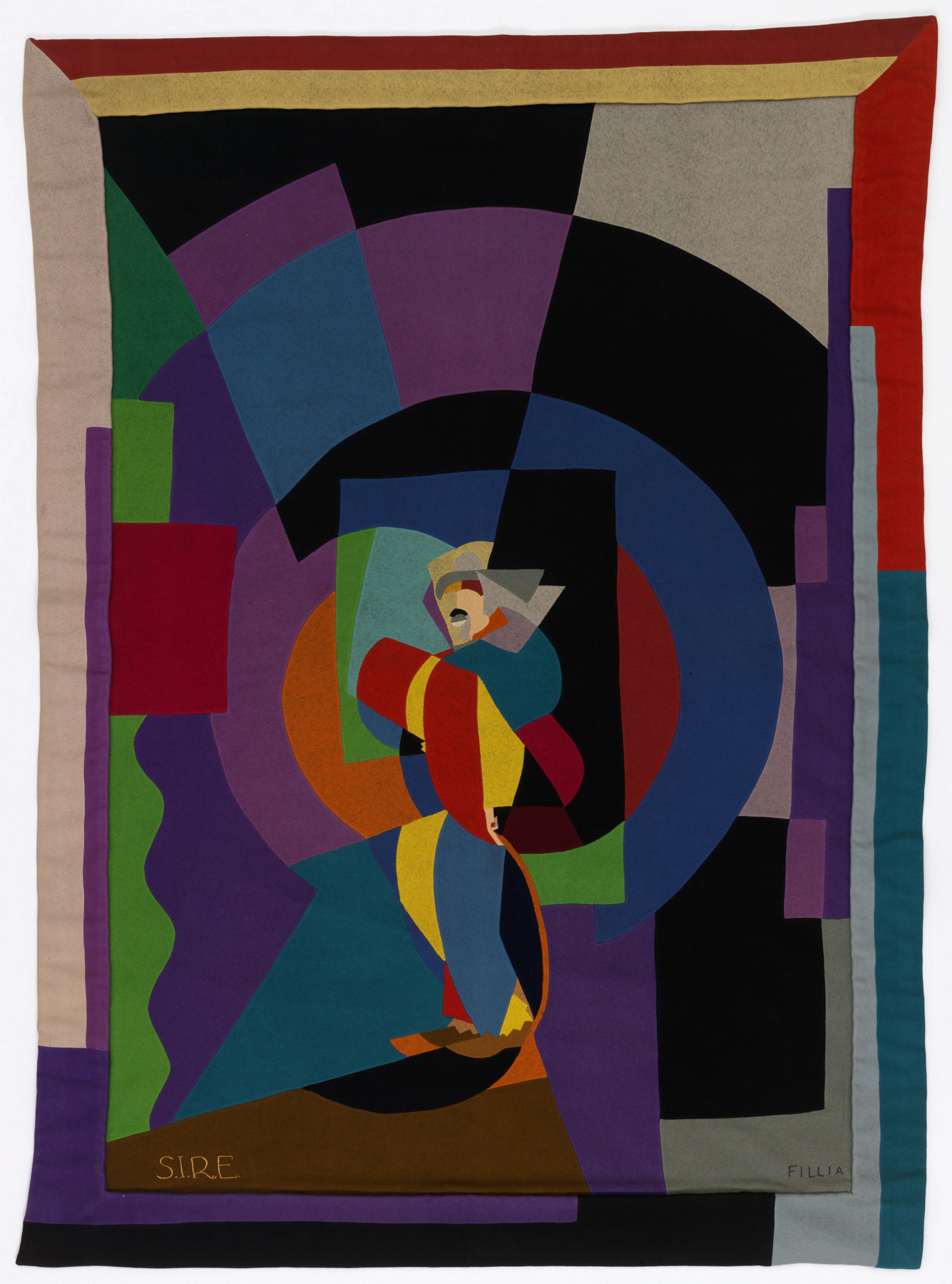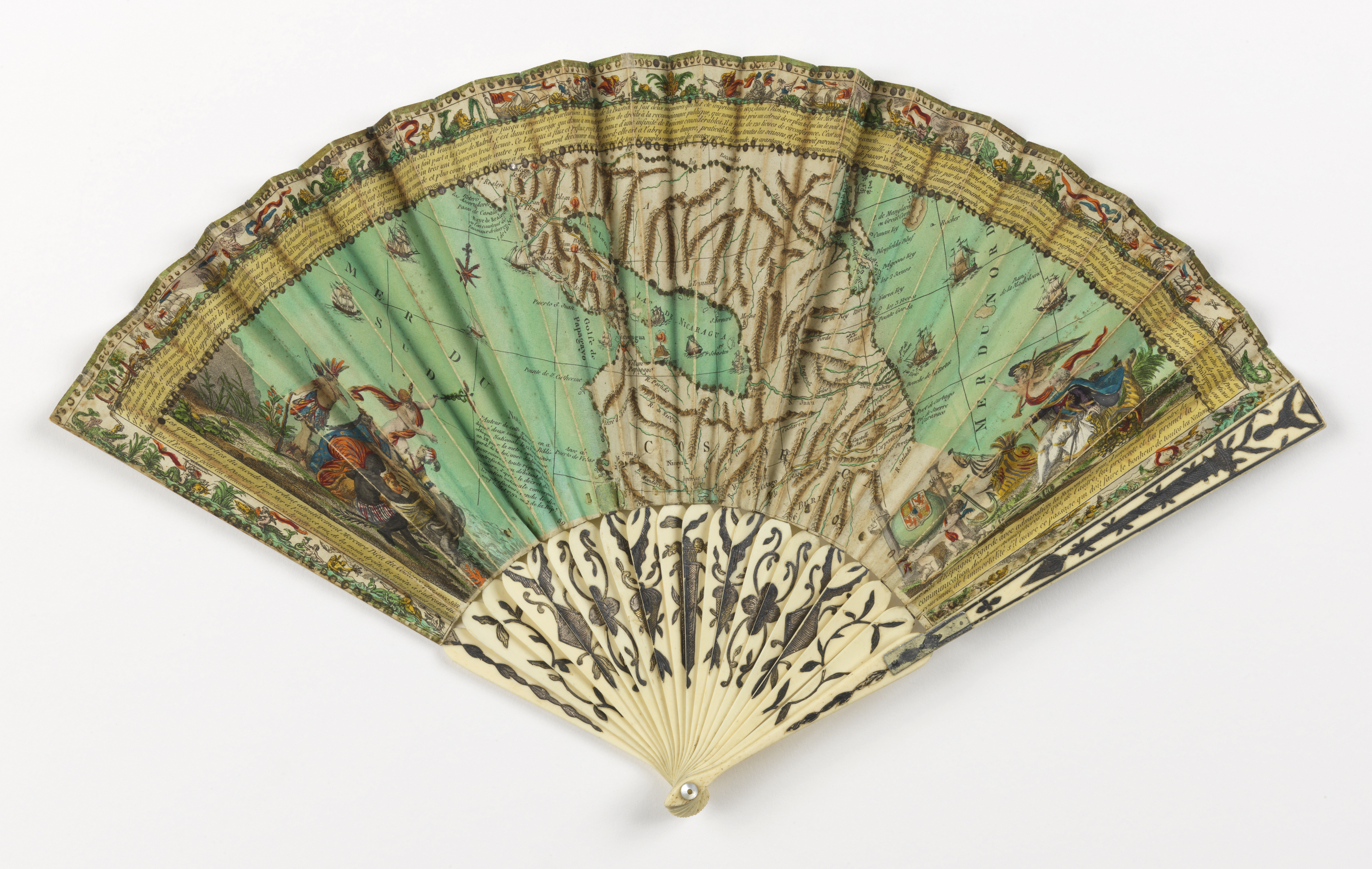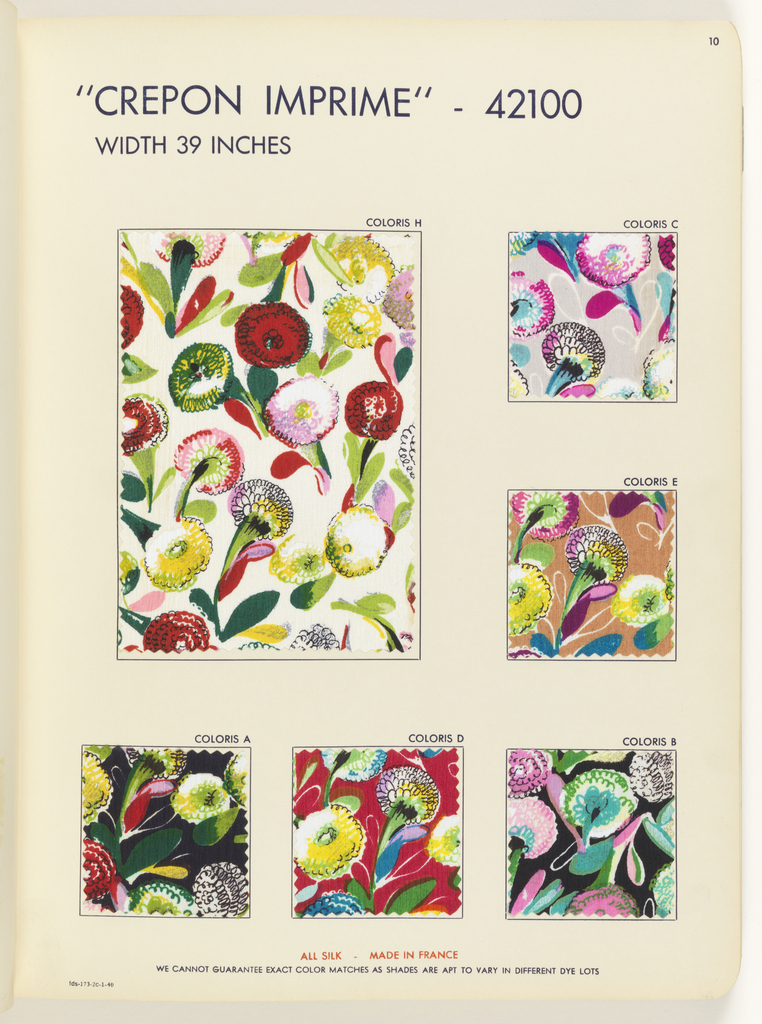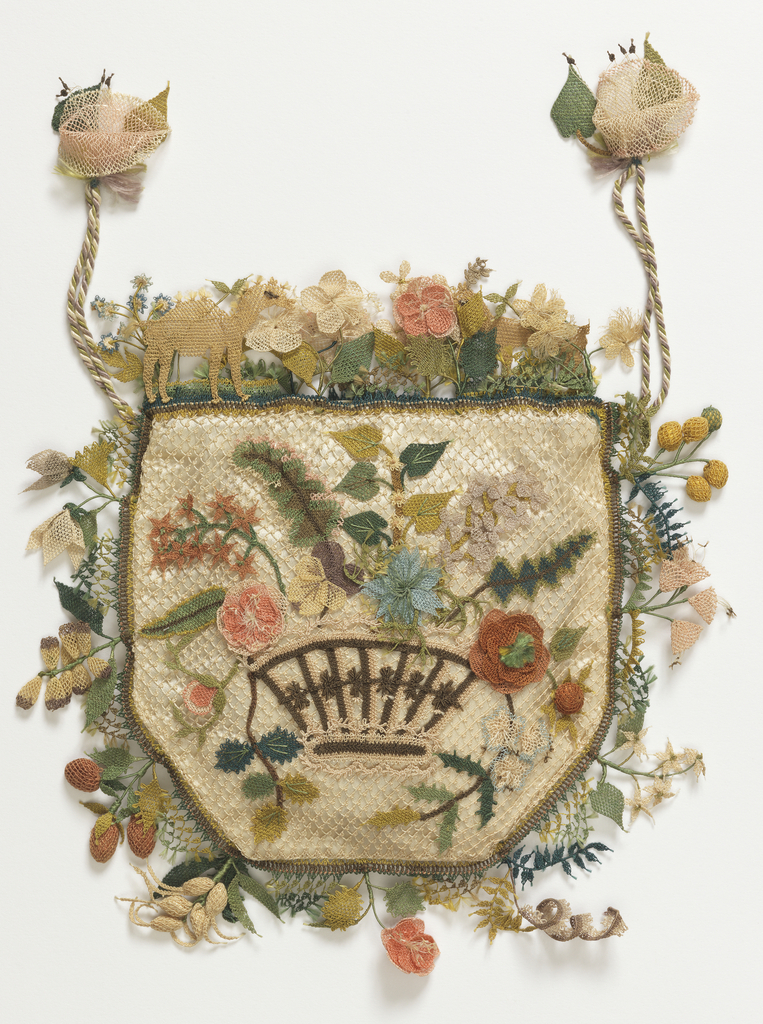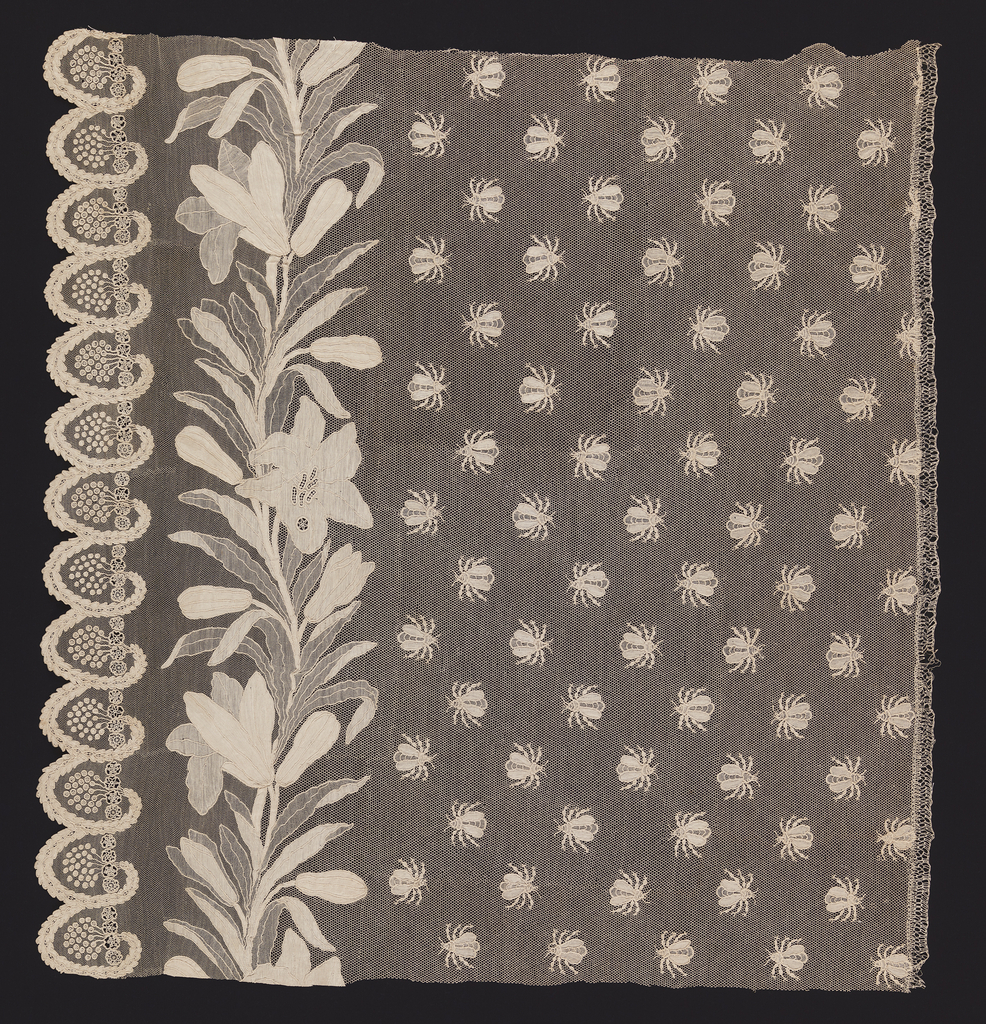The embroidered hanging, Fields from the Air, by artist and designer Mariska Karasz (American, b. Hungary, 1898–1960) is an exploration in abstraction. Karasz used tightly couched thick yarns to depict the swirling colors of the earth as seen from a great distance. She offset these heavy curvilinear forms with clusters of leaf and feather shapes...
Acquired in 1896, this fragment of red damask reportedly was removed from a chair following Emperor Maximilian’s brief reign of Mexico, which ended with his execution in Querétaro in 1867. When Napoleon III of France invaded Mexico in 1862, he intended to install a government friendly to French interests and subsequently invited the young Austrian...
Neyret Freres, a French company that operates today, once specialized in the manufacture of woven silk pictures, official state ribbons and trademarked woven items for clothing manufacturers. The company, founded by M. Antoine Bizaillon, started as a small ribbon factory in 1825 in St. Etienne, France. He later sold the company to his nephew, Jean-Baptiste...
In 1972 Cooper Hewitt received a bequest of textiles from New York City architect and artist Julian Clarence Levi (American, 1874-1971). It mainly was comprised of French and Indonesian textiles, but also included two unusual velvet panels printed with pre-Columbian bird motifs and other forms. The design itself is rather simple and contains two vertical...
This printed fragment by American Print Works of Fall River, Massachusetts has offset rows of small portrait medallions that contain the image of South American liberator Simón Bolívar (Venezuelan, 1783–1830). This fabric likely was produced for Philadelphia’s Centennial Exposition of 1876, which celebrated the one hundredth anniversary of the signing of the Declaration of Independence....
In 1985, Cooper Hewitt received a gift of seventy-eight woven labels from ASL Industries of Great Neck, New York. The company specialized in the manufacture of woven labels for clothing, luggage, toys, and shoes. The majority of the gift included labels for major retailers and garment manufacturers like Gap and London Fog, but a few...
Eleanor Garnier Hewitt (1864–1924) and Sarah Cooper Hewitt (1859–1930) gave identical Spanish pleated fans to the Museum for the Arts & Decoration at Cooper Union. Eleanor donated her fan in 1924 while Sarah’s came later in the form of a bequest in 1931 (acc. no. 1931-6-150). Both fans were signed in Seville on April 13,...
American textile designer and collector Herman A. Elsberg (American, 1869–1938) designed this eye-catching furnishing fabric in the early 1920s. It was hand woven on a Jacquard loom at Elsberg’s factory in Lyon, France. Gold gazelles leap under the watchful eyes of silver falcons on a brilliant green ground scattered with clusters of leafless dark blue...
Early in the eighteenth century, France was eager to imitate British success in exports of woolen textiles, especially to the Levant, an area roughly defined as a region of the eastern Mediterranean including Turkey and Egypt and points in between. By 1720, the French had vastly improved the quality of their woolens, and a system...
In the seventeenth and eighteenth centuries, a lace cap with a pair of long streamers was a popular headdress for women. The most fashionable cap streamers were made of delicate bobbin or needle lace. These cap streamers or lappets were sometimes pinned up, but often they hung loose about the sides or back of the...
Fillìa was the adopted name of Italian Futurist artist Luigi Colombo (1904–1936). Fillìa’s association with the Futurists began with the second generation that rose to prominence during the 1920s. This next wave of artists gave the movement a much needed infusion of avant garde spirit after the death or defection of several Futurist founders. Their...
The desire to build a transoceanic canal through Nicaragua has endured for centuries. In 1791, a Frenchman, Martin de la Bastide, published a treatise urging the King of Spain to construct a canal through Central America by way of Nicaragua. The proposed canal took advantage of the Rio San Juan, a river on the Caribbean...
François Ducharne (French, n.d.), owner of the luxury textile company Soieries F. Ducharne, sold his colorful printed dress silks in France and the United States. Ducharne started his business in Lyon, France in 1920, likely inspired by the successful and profitable collaborations between artists and textile manufacturers such as Raoul Dufy’s (French, 1877–1953) partnership with...
This charming purse from Turkey likely was produced for the growing market of foreign visitors as international tourism developed in the nineteenth century. It was made using a hooked needle similar to a tambour hook. The technique is an Eastern Mediterranean form of needle knotting, alternately referred to as bebilla, bibila or oya, and it...
This valance fragment is just a small piece from a set of bed furnishings commissioned by Napoleon I (1769-1821) for his wife Joséphine (1763-1814). Intended for their home in Malmaison, located outside Paris, the commission consisted of a ceiling canopy, pair of curtains, bed cover and valance. Made of fine point d’Alençon lace by the...
